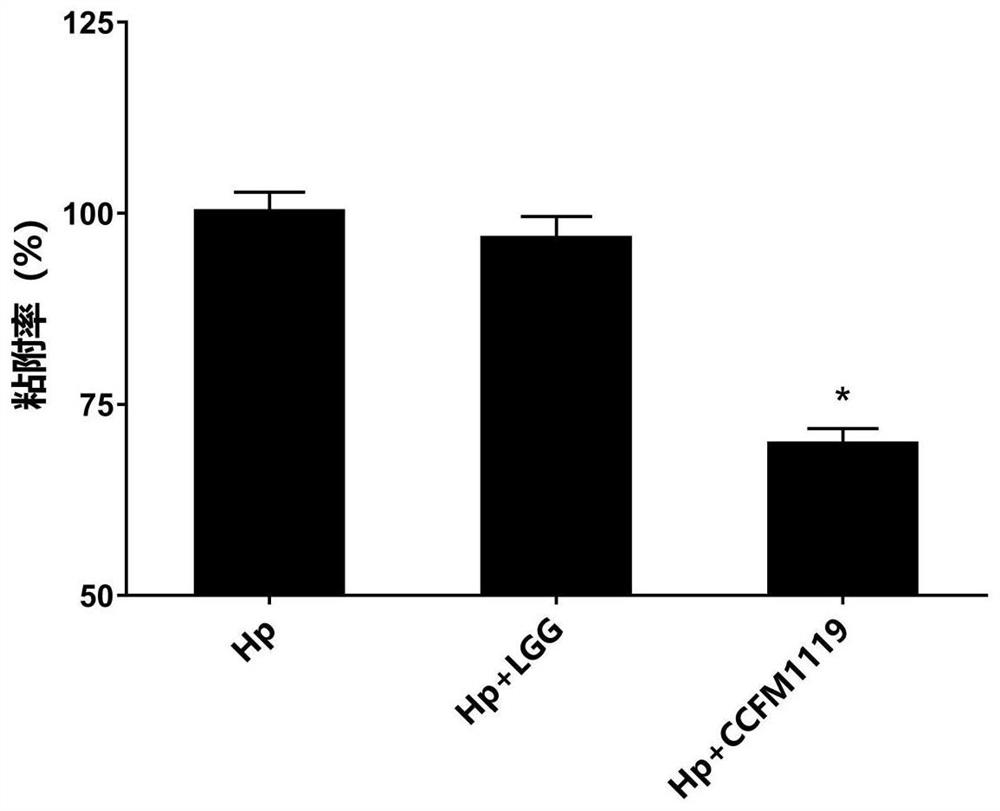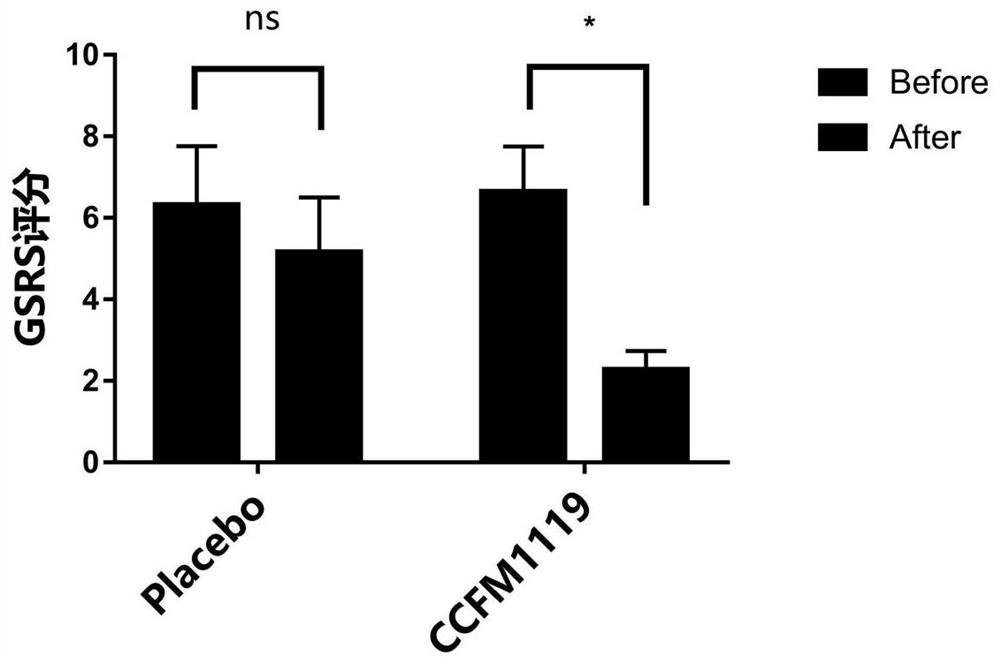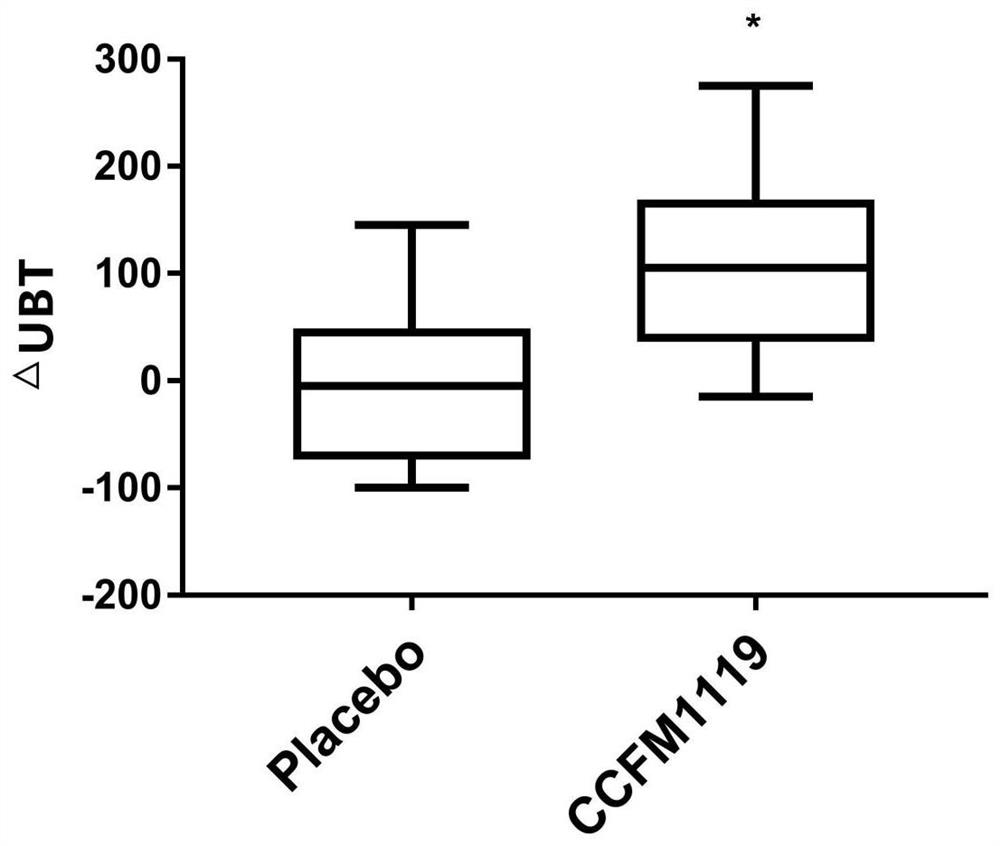A strain of Lactobacillus rhamnosus and its application in inhibiting Helicobacter pylori
A technology of Lactobacillus rhamnosus and Helicobacter pylori, applied in the field of microbiology, can solve the problems of reduced treatment efficiency, unsatisfactory treatment effect, and increased drug resistance of Helicobacter pylori
- Summary
- Abstract
- Description
- Claims
- Application Information
AI Technical Summary
Problems solved by technology
Method used
Image
Examples
Embodiment 1
[0072] Embodiment 1: Screening and identification of Lactobacillus rhamnosus
[0073] 1. Screening
[0074] Take fresh feces from healthy people in Kunshan City, Jiangsu Province as the sample. After the sample is pretreated, it is stored in a -80°C refrigerator in about 30% glycerol. Perform gradient dilution with 0.9% normal saline, select the appropriate gradient dilution and spread it on the MRS solid medium, incubate at 37°C for 48 hours, pick typical colonies to streak and purify on the MRS plate, pick a single colony and transfer it to liquid MRS The liquid medium was enriched and stored in 30% glycerol to obtain the strain CCFM1119 (the original serial number of the strain was JS-SZ-2-1).
[0075] 2. Identification
[0076] The genome of CCFM1119 was extracted, and the 16S rDNA of CCFM1119 was amplified and sequenced (completed by Shanghai Sangon Bioengineering Co., Ltd.). After sequencing analysis, the 16S rDNA sequence of the bacterial strain was shown in SEQ ID NO...
Embodiment 2
[0077] Embodiment 2: Inhibitory effect of Lactobacillus rhamnosus on the growth of Helicobacter pylori
[0078] Using MRS liquid medium as a negative control, streak Lactobacillus rhamnosus CCFM1119 on MRS solid medium and culture at 37°C for 48 hours to obtain a single colony; pick a single colony and inoculate it in MRS liquid medium, and inoculate at 37°C Cultivate under the conditions for 18h to activate, and activate two generations continuously to obtain the activation solution; inoculate the activation solution in the MRS liquid medium at an inoculum size of 2% (v / v), and cultivate it for 18 hours at 37°C to obtain the bacterium solution; Bacteria solution was passed through a 0.22 μm sterile filter membrane after being centrifuged at 8000 g for 10 min to obtain a supernatant; the effect of the supernatant on inhibiting the growth of Helicobacter pylori was measured by the Oxford cup method, and the results are shown in Table 1 (the Oxford cup method can refer to the lit...
Embodiment 3
[0082] Example 3: Effect of Lactobacillus rhamnosus on Helicobacter pylori adhesion
[0083] Resuspend Helicobacter pylori cells with F12 to a concentration of 1×10 7 CFU / mL to obtain Helicobacter pylori resuspension; Lactobacillus rhamnosus L.GG cells were resuspended with F12 to a concentration of 1×10 7 CFU / mL to obtain Lactobacillus rhamnosus L.GG resuspension; resuspend Lactobacillus rhamnosus CCFM1119 cells with F12 to a concentration of 1×10 7 CFU / mL to obtain the resuspension of Lactobacillus rhamnosus CCFM1119.
[0084] AGS cells that were not treated with L. rhamnosus L.GG and L. rhamnosus CCFM1119 and not infected with Helicobacter pylori were used as the blank group, and AGS cells that were not treated with L. rhamnosus L.GG and Lactobacillus rhamnosus CCFM1119 Treated Helicobacter pylori-infected AGS cells were used as the model group (Hp group), AGS cells were infected with Helicobacter pylori treated with Lactobacillus rhamnosus L.GG and AGS cells were infecte...
PUM
 Login to View More
Login to View More Abstract
Description
Claims
Application Information
 Login to View More
Login to View More - R&D
- Intellectual Property
- Life Sciences
- Materials
- Tech Scout
- Unparalleled Data Quality
- Higher Quality Content
- 60% Fewer Hallucinations
Browse by: Latest US Patents, China's latest patents, Technical Efficacy Thesaurus, Application Domain, Technology Topic, Popular Technical Reports.
© 2025 PatSnap. All rights reserved.Legal|Privacy policy|Modern Slavery Act Transparency Statement|Sitemap|About US| Contact US: help@patsnap.com



